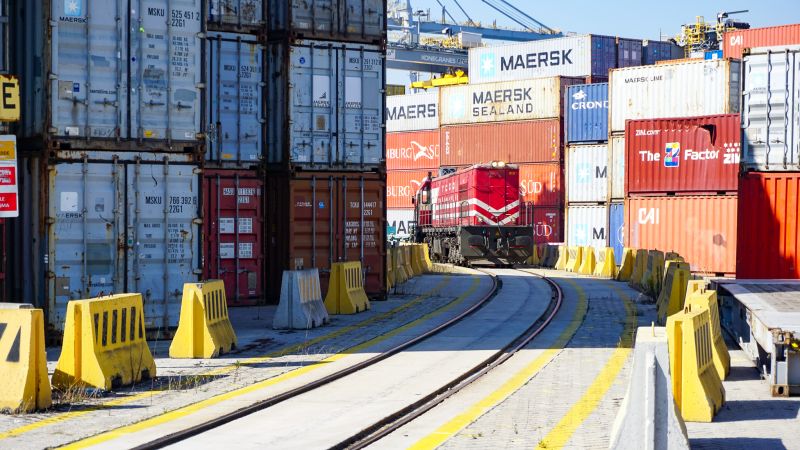

Inland Container Depot (ICD): Definition, Services, and Associated Costs
When transporting containers, your cargo will often pass through a logistics hub called an Inland Container Depot (ICD). This article explores the concept of ICDs, their benefits, compares them to similar models, the services they offer, and their operational processes.
What is an Inland Container Depot (ICD)?
An Inland Container Depot (ICD) is a storage facility located away from the bustling seaport environment. Often referred to as an "inland port," the ICD serves as a crucial link in the supply chain and global logistics network.
Unlike seaports situated along coastlines, ICDs are strategically positioned inland and typically act as intermediary points.
These facilities offer a wide array of container and cargo handling services both at departure and destination points. Their operations include container storage, maintenance, repairs, stuffing, and unstuffing. Additionally, they support other logistical services such as customs clearance and consolidation.
Who Uses Inland Container Depots?
Importers and Exporters: International businesses rely on ICDs for storage, customs clearance, and other logistical needs.
Logistics Service Providers (LSPs): Companies specializing in freight forwarding make use of ICDs to efficiently manage their clients' shipments.
Shipping Lines: While their main operations are at seaports, some shipping companies also operate ICDs to handle empty containers, maintenance, and repair services.
Landlocked Countries: Nations without direct access to the sea utilize ICDs as a connection to international maritime trade. ICDs operate as virtual seaports by connecting via rail or barge, facilitating import and export activities.
Benefits of ICDs in the Supply Chain
Reduction of Congestion: Seaports often face congestion, which can slow down cargo movement. ICDs act as overflow points, storing containers and processing them before customs clearance, thereby freeing up space and speeding up port operations. This helps reduce storage fees at ports and improves vessel punctuality.
Resource Optimization: Long-distance container transport to ports can be costly. ICDs help clients access containers and goods more conveniently. This leads to smoother operations (unloading, reloading), minimizing transportation and labor-related costs.
How ICDs Operate
ICDs are busy hubs for managing containerized cargo. Here’s an overview of the typical process:
Arrival: Containers arrive at the ICD via truck, train, or barge, either fully loaded with exports or empty for loading.
Registration and Documentation: Containers are logged into the ICD system with details on contents, origin, and destination. All necessary paperwork is reviewed for compliance, including customs declarations and physical inspections if required.
Storage: Based on their status (import/export, full/empty), containers are placed in designated storage areas within the ICD.
Customs Procedures (for Imports): Some ICDs handle full customs clearance, including inspections, tax payments, and license approvals. This enables importers to complete procedures closer to their location, easing port congestion and accelerating cargo transport.
Additional Services: Certain ICDs offer extra services like container stuffing and unstuffing, fumigation, refrigerated handling, and preparation of containers for transport.
Transport: After completing the necessary procedures, containers are prepared for onward transport. This includes loading the containers back onto trucks or trains for shipment to the port (for export) or final destination (for imports).
Services Provided by ICDs
Storage: Secure temporary or long-term storage for both full and empty containers.
Container Preparation: Containers are inspected and prepared for dry or refrigerated goods.
Transport Linkages: ICDs are connected to road, rail, and waterway networks to facilitate efficient cargo movement.
Stuffing and Unstuffing: Efficient packing and unpacking of a wide variety of goods.
Some ICDs, like Maersk, also provide value-added services, including verifying the gross mass (VGM), fumigation, refrigerated handling, container inspections, and cargo checks.
Costs Associated with ICDs
While ICDs help reduce overall shipping costs, there are still several fees involved in using their services. Here’s an overview:
Storage Fees: ICDs charge storage fees based on container size and duration. Rates may vary depending on the type of container (dry or refrigerated) and the storage duration (short-term or long-term).
Handling Fees: Activities such as loading and moving containers within the ICD may incur handling fees. These charges generally depend on the number of moves required and the type of equipment used.
Value-Added Services: Optional services like container stuffing/un-stuffing, fumigation, or VGM verification carry additional charges. Fees depend on the service type, container size, and work involved.
Security Fees: Some ICDs may impose additional charges for enhanced security measures, such as surveillance cameras or advanced monitoring technologies.
Factors Affecting ICD Costs
Location: The geographical location of the ICD can influence its costs. ICDs in high-demand areas may charge higher fees compared to those in less congested locations.
Volume Discounts: Many ICDs offer discounts for businesses that frequently use their services or handle large shipments.
Negotiation: Depending on your business relationship with the ICD and the volume of goods being handled, there may be room for negotiating specific fees.